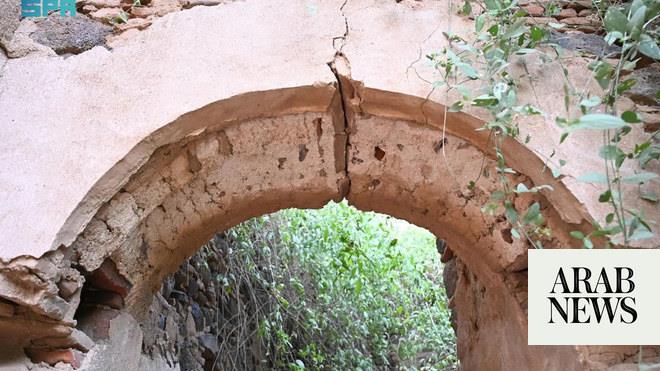
Remnants of ancient Abrahamic history were destroyed when an earthquake flattened much of Antakya in southern Türkiye last month, but many hope the city can rise from the rubble as it has done over centuries of disasters and conquests.
Established by the Seleucid Empire in 300 BC, Antakya, formerly Antioch, has been home to Jews, Christians and Muslims and destroyed or heavily damaged several times as it changed hands between Greeks, Romans, Arabs and Ottomans.
Much of the rescue effort after the Feb. 6 earthquakes focused on the modern, residential side of Antakya, where thousands were caught in their sleep and crushed or trapped under the rubble. In total, nearly 52,000 people were killed in Türkiye and Syria.
On the opposite bank of the Orontes River, in the old town once popular with tourists, mosques and churches lie ruined. Rescue efforts in the area, populated with businesses rather than homes, were sparse, while security forces kept guard against looters at every corner.
Abdurrahman Kurdo, a business student and the manager of a hotel near the destroyed Antioch Greek Orthodox Church, was sifting through the rubble to salvage what he could of Antakya's culture. So far he had found an issue of Hatay Magazine, celebrating life in Türkiye’s southernmost province, from the 1970s.
"The rubble in this area is not only made up of concrete piles, rocks and roof tiles - the culture of Hatay lies underneath," he said.
"What we learn from our elders is that Hatay witnessed seven earthquakes in its history but it was reborn from its ashes. We believe that Hatay will be reborn from its ashes again."
The entrance to the courtyard of the church, rebuilt after an earthquake in 1872, can now only be accessed from a side street by climbing over a mound of debris.
Habib-i Najjar Mosque
The bell tower lies on its side, with clothes placed on top for earthquake victims to take. From the courtyard, the entrance to the church is barely recognizable, the door hidden behind rubble.
The floor is also covered by rubble from the collapsed roof, while several paintings of Jesus and the saints hang slanted and covered in dust and mud on the walls. Others lie among the debris.
The Habib-i Najjar Mosque, said to be the first mosque in the Anatolia peninsula, dates back to the Roman Empire, when it is believed there was a pagan temple in its place. A church built in its place was turned into a mosque and then back to a church, a pattern repeating itself several times. It was last rebuilt by the Ottoman Empire in the 1800s after an earthquake.
The minaret collapsed in last month's disaster and only a small section of the dome above the pulpit can be seen behind the rubble of the front wall that fell into the courtyard, while three other walls appear intact.
The Ulu Camii (Grand Mosque), dating back to the 18th century, collapsed, while the minaret of the Sarimiye Mosque, built in the 16th century, has toppled. Other historical buildings, including the governor's office, were also destroyed.
Kurdo recalled how people of different religions coexisted in the city. "We always lived together, we grew up together," he said. "We believe we will lift up Hatay again as one power."
Among the victims of the Feb. 6 earthquake were Saul Cenudioglu, leader of the Jewish community in Antakya, and his wife, Tuna Cenudioglu.
The Antioch Synagogue is still standing but there are cracks in the walls and debris everywhere, said Rabbi Mendy Chitrik, chairman of the Alliance of Rabbis in Islamic States.
‘Coexistence, tolerance’
Antakya has been home to Jews for more than 2,300 years but the community had shrunk to fewer than 20 in recent years.
"However small it was, it had a very big part in the heart of the city," Chitrik said. "The heart of Antakya always showed this coexistence, tolerance. It was quite amazing to see this real connection between different traditions, cultures, ethnic backgrounds."
Olcay Aydemir, an architect and restoration expert, said the region had experienced earthquakes over thousands of years and restoration efforts had to be sensitive.
"These structures rise from their ashes," she said. "These rocks should not be thrown away. The ones that can be re-used need to be re-used."
The structures that were still partly standing, such as the Habib-i Najjar Mosque, needed to be strengthened, Aydemir said, adding that every collapsed structure had to be examined individually to learn from the past and apply the lessons to the future.
"The last earthquake was bigger than expected. But it brought with it important data that could inform us about structures' weaknesses and reasons for their collapse," she said.












